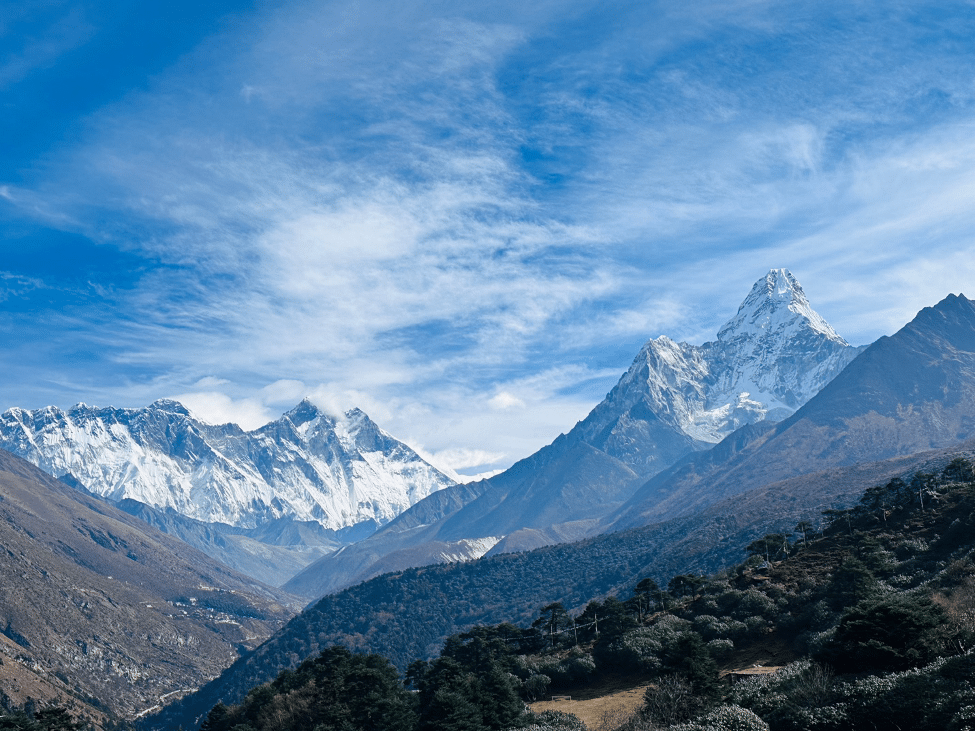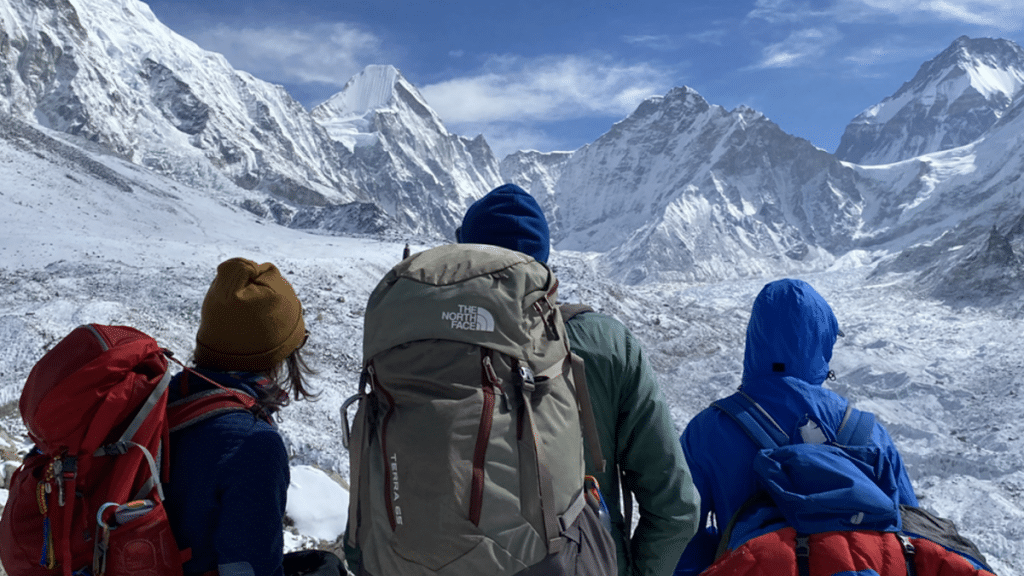Mount Everest is the ultimate epitome of magnificence and beauty when it comes to the natural beauty of Nepal and the world. Many nature lovers and mountaineers regard it a matter of great honor to conquer a trek around the tallest peak of 8848m, which is why the trek to Everest Base Camp is renowned as the journey to the roof of the world. The Mount Everest Base Camp trek offers more delight and surprises than you can imagine. If you plan to embark on this prestigious trip, we want to ensure you relish all the mesmerizing beauty and incredible thrill the trek offers. In this blog, we try to serve as a brief guide for your beautiful trek to the Everest Base Camp region.
What is Everest Base Camp Trek?
Everest Base Camp Trek or EBC Trek is a world-class trek that leads you to the base of Mount Everest, where mountaineers establish a base camp for further ascending to the supreme top. The adventurous Everest trek brings you closer to the highest snow-capped mountains of the Everest region, situated in the Solukhumbu district on the border of Nepal and Tibet. As an EBC trekker, you will cover a total distance of 125 kilometers in this adventurous trip. Your lifetime opportunity to gain a distinct and closer view of mountain paradise, in other words.
The ultimate destination of the trek is the lap of the extraordinary Mount Everest, known as Everest Base Camp. When you arrive at the camp, a heavenly world of tough Sherpa people of the Himalayas welcomes you to dive into their ethnic culture and traditions. The Sherpas are the ultimate mountain climbers; they have broken numerous world records for conquering the highest peaks in the world. One of the most beautiful parts of the trek is Sagarmatha National Park, one of the UNESCO World Heritage Sites, where you will hike to experience the natural spirit of this region through observation of flora and fauna, like snow leopards and Himalayan peasants, protected in the park.
The trek is an excellent opportunity to walk on incredible trails. Not just that, imagine visiting religious monasteries in pure and pristine vibes!
Major Highlights:
- Rewarding view and landscape
- Exploration of Sherpa towns- Namche Bazaar and Lukla
- Exploration of Sherpa culture and traditions
- Pangbouche and Tengboche Monasteries
- Kalapathar viewpoint
- Resting on the lap of the highest peak
- Hiking through Sagarmatha National Park
Everest Base Camp Trek Route in a glimpse
- The ultimate journey to the roof of the world starts from Lukla, where you arrive via flight from Ramechhap, i.e., 3-4 hours’ drive from Kathmandu. Beginning from Lukla, you will walk down to the lively Sherpa hub called Namche Bazaar after crossing a few suspension bridges and picturesque villages inhabited by Sherpa people.
- As you trek further, you will visit many ancient monasteries in Pangbouche and Tengbouche for a spiritual experience, as well as immerse in the divine beauty of nature.
- In your next destination, you will witness the remarkable beauty of Kala Patthar at 18,520 feet above sea level.
- From Kala Patthar, the highest point of the trail, you’re ready to welcome the grand view of Mount Everest, standing tall in its remarkable glory.
- After reaching the Everest Base Camp, it is time to relax and enjoy your time exploring the Khumbu glacier. By this time, you get enough sense of acclimatization, and you may truly acknowledge and appreciate the beauty and spiritual connection of the trip.

Challenges of EBC Trek
Physical challenge: The main physical challenges of the trek to Everest Base Camp are weather and acclimatization at the high altitudes. Ensure you have enough suitable and comfy clothes in your backpack to withstand varying degrees of temperature in the inconstant weather while trekking the Everest region As you ascend higher up to the mountains, it’s a good idea to acclimatize slowly to prevent altitude sickness.
Mental Challenge: As much as the Everest Base Camp trek is physically challenging, it is equally so mentally indeed. But, since the trekkers regard Mount Everest as a true gem among other mountains, they complete the journey with resilience and confidence despite challenges. Their aim of beholding the valuable Mount Everest in their eyes fills them with enthusiasm and courage.
Best seasons
Pre-monsoon or spring and post-monsoon or autumn are the two favorable seasons for embarking on the Everest Base Camp trek. The first season falls in March, April, and May, and the second falls in late September and November. During these seasons, the sky is clear and you can enjoy the rewarding views of gorgeous mountains. For a safer and sounder trek and to avoid unnecessary hassles and unwanted dangers, it is recommended that you trek during the favorable seasons.
You can go for the Everest Base Camp trek between December and February, but be mindful that it comes with its challenges of cold night temperatures, heavy snowfall, route blockages, etc. So, if you want to cherish the Everest Base Camp memories for a lifetime, it is better to trek in the best seasons for a more comfortable Everest Base Camp trek.
Wait! Prepare before you go…
Excited for the amazing EBC trek? Prepare yourself well before you set out on this trek:
Build good stamina: If you’re not a trekker or a regular hiker, there are high chances that you might suffer physically along the way during the trekking duration. A few weeks or months before the trek, start practicing cardiovascular exercises, hiking, and endurance exercises for easy climbing during the trip.
Have trekking gear ready: A comfortable and insulated trek suit, proper hiking boots, a reliable backpack, and other necessary accessories are must-haves for a successful and happy trek.
Conclusion
The Everest Base Camp trek is extraordinary due to the glory of Mount Everest, the apple of the trekkers’ eyes. You might face unpredictable circumstances, but the rewarding views of mountains, flora and fauna, and spiritual experience in the religious sites make it worthwhile. Before you embark on this beautiful journey, please be informed about costs, kinds of available food, potential risks, etc.
For detailed information, you can always write to the trekking agency in Nepal.
